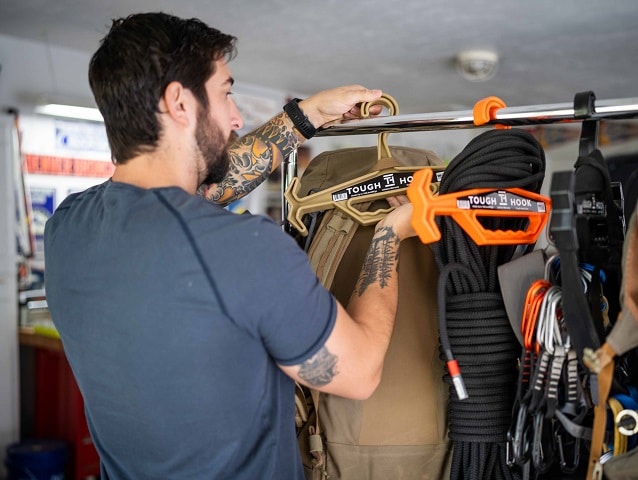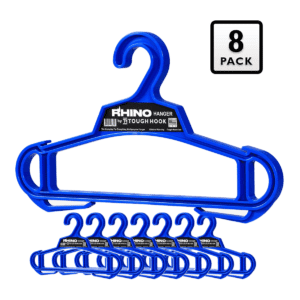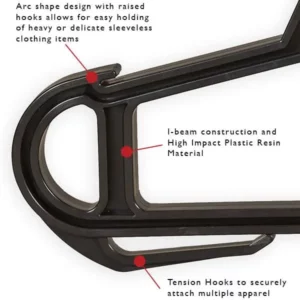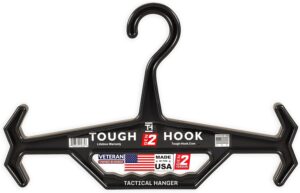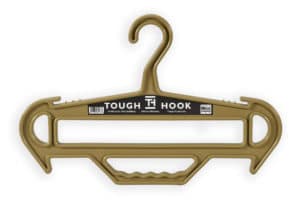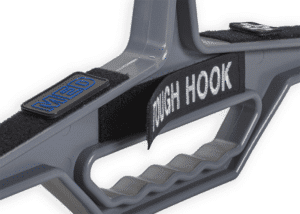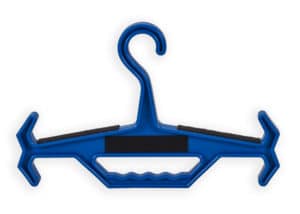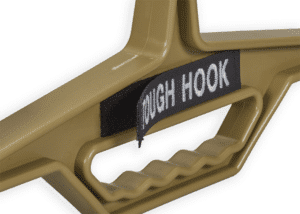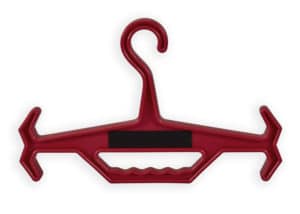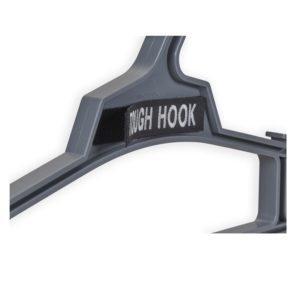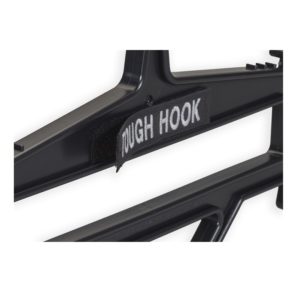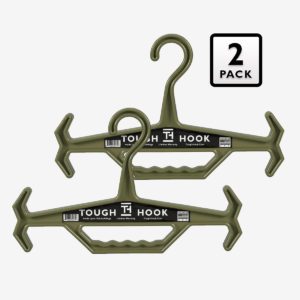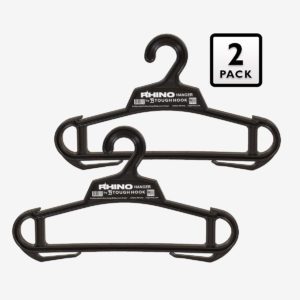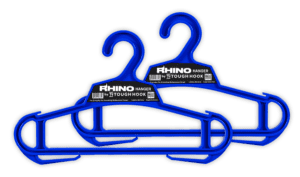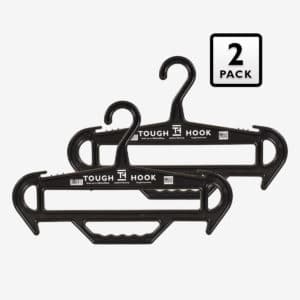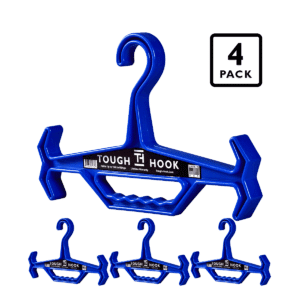Imagine this: it’s dawn, the quiet whispers of the pristine river coaxing you into another exciting angling adventure. You’re all geared up, proudly sporting your trusty high and dry waders – your second skin that gallantly fends off menacing water and cold. But, what if the very next moment, the chilling reality of a leak dampens your thrill? As frustrating as it sounds, poorly maintained waders can quickly turn a fantastic fishing day into a soggy disappointment. Fear not! In this blog post, we’ll guide you meticulously through easy-to-follow steps to maintain your high and dry waders for long-lasting use. Stay tuned, because reliable protection from water and chill starts with treating your waders right! Let’s dive in…
To maintain your High and Dry waders for long-lasting use, rinse the exterior thoroughly after each use and use a boot dryer to eliminate moisture and prevent bacterial growth. Store your waders in a cool, dry, and dark place with adequate air movement to prevent mold growth. Additionally, follow the manufacturer’s care instructions to optimize their lifespan. By properly caring for your waders, you can avoid having to replace them frequently, saving both money and the environment.
The Basics of High and Dry Waders Maintenance
High and Dry waders are known for their quality, comfort, and ability to keep you dry during your outdoor adventures. However, to ensure that they continue to perform optimally and last long, proper maintenance is crucial. Here are some basic wader maintenance tips to help you maintain the longevity of your waders.
After each use, remove any debris or dirt from the exterior of the waders by rinsing them with plain water. Be sure to pay close attention to seams and creases that could harbor dirt or debris. Doing this will prevent any buildup of bacteria that can lead to unpleasant odors.
You should not put your waders away wet, as doing so can lead to mildew growth and damage the seams. Instead, make sure you dry them before storing them. Ensure that they are completely dry both inside and out before putting them away.
Some anglers will be tempted to hang their waders upside down by the ankles when drying them. However, it is not recommended as it could cause the boots to stretch over time. Instead, hang your waders in a cool, dark area with good air circulation. Avoid areas with direct sunlight or high temperatures.
Now that we’ve covered some of the basics let’s move onto how you can clean and condition your wader’s seams.
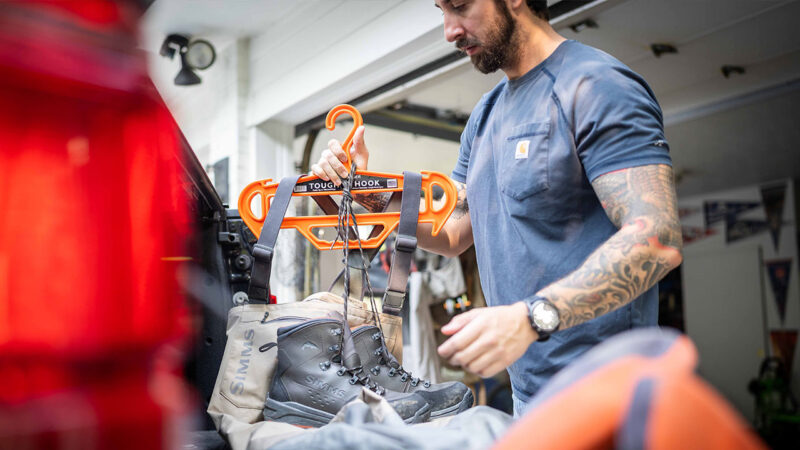
2 Pack RHINO Heavy Duty Clothes Hanger Bundle
Original price was: $25.95.$23.95Current price is: $23.95.Cleaning and Conditioning the Seams
Seams are an essential aspect of high-performance waders since they’re responsible for keeping you dry while standing in water. Over time, seams may wear out or weaken due to dirt, rocks, or other particles that can rub against them while moving around on riverbeds or other uneven surfaces. To ensure their strength remains intact, periodic cleaning and conditioning are necessary.
To clean seams thoroughly, start by wiping down the waders with a damp sponge or cloth to remove any dirt. Once you’ve removed all visible dirt, let your waders dry out completely, then apply a seam sealant or water repellent spray on seams and zippers.
If you notice any signs of damage, it’s important to repair them immediately to prevent water from seeping into your waders. You can use a waterproofing tape or touch up paint to fix small tears or holes. In case the leak is more significant, consider getting repairs done by a professional.
Some anglers recommend using soap and water while washing their waders to ensure thorough cleaning. However, please note that they should only be cleaned with mild soap and never subjected to harsh detergents or bleach as they can weaken the material.
Think of your high and dry waders as an investment into your outdoor adventures and maintaining them would ensure that investment pays dividends for many seasons to come.
Now that we know the basics of high and dry wader maintenance and how to keep their seams clean and conditioned, next, we’ll discuss how season-wise maintenance can double up the lifespan of your gear.
Protecting the Rubber Boots
Rubber boots are an integral part of waders, and proper maintenance is crucial to ensure they stay functional for a long time. To protect your rubber boots, you must take necessary steps to keep them free from chemicals, sharp objects and UV rays, which can cause early wear and tear. Here’s how you can go about protecting your rubber boots.
First off, it’s important to understand that rubber is prone to break down when exposed to harsh chemicals such as gasoline and cleaning products. When taking off your waders, avoid stepping on or dragging them in areas that may have chemical spills or splashes. Make sure you store the waders away from any harmful chemicals.
On the same note, if your fishing adventures include saltwater fishing or angling in areas with high mineral content in water, make sure you rinse the rubber boots (as well as the entire wader) thoroughly with freshwater before storing it away. The minerals in saltwater can eat away at the material over time and decrease its longevity.
Many anglers prefer to use silicone sprays and similar products to condition their rubber boots. While these products may provide some benefits in terms of lubrication and waterproofing, they can also attract unwanted debris and dirt particles that can cause damage to the material over an extended period. If you choose to use a silicone spray or conditioner regularly, make sure you follow all application instructions carefully.
Think of your rubber boots like car tires – they require regular attention and care to maintain peak performance. Neglecting them will result in eventual failure and could even lead to costly replacements sooner than expected.
Season-Wise Maintenance for High and Dry Waders
Different seasons require different approaches when it comes to wader maintenance. Summer heat and humidity may not affect your waders as much as freezing temperatures in the winter, but both require different care. Here’s what you need to do to maintain your waders season by season.
In the summer, one of the biggest concerns is sweat and bacteria buildup. During hot and humid days, make sure you rinse off your waders thoroughly before storing them away. Use a cleaner designed for waders and scrub with a soft brush for best results. Pay extra attention to the areas around the feet, as this is where bacteria are most likely to accumulate.
To counteract humidity during storage, apply a light coat of talcum powder over the rubber boots and other material. This will help absorb any leftover moisture and prevent mold growth or unpleasant odor.
Some anglers prefer to leave their waders outside in direct sunlight to dry after use. While this method may work for quick drying, prolonged exposure can weaken the rubber boots and cause cracking. It’s best to hang the waders inside in a well-ventilated area away from direct sunlight for best results.
Consider your wader maintenance like preparing a car for different driving conditions – each requires a unique set of steps to ensure optimal performance.
Summer Care and Maintenance
Summer brings a new level of excitement for all outdoor enthusiasts, especially those who love fishing. The warm weather draws us to the water and inevitably brings us into contact with our waders. Keeping your high and dry waders primed for extended use during the summer months can be challenging, but it is essential to maintain their quality. Here are some helpful tips for maintaining your high and dry waders during the summer season:
Firstly, it is essential to rinse off your waders after every use. These rinses should be in cold water, ideally using a hose or pressure washer if possible. Dirt and sand particles can quickly deteriorate both the exterior and interior of your waders, so washing them thoroughly will ensure these impurities do not get embedded within the seams.
Never wash your high and dry waders with hot water or detergents as this may damage the glue or tape that seals the seam of the waders. You can use simple soap solutions designed for neoprene by spraying down the exterior of your waders with a surfactant like Mirazyme before soaking them in cold water.
Imagine wearing clothes that have been worn multiple times without being washed; dirty socks or shoes provide an excellent analogy of what happens when external debris is left on your waders while in storage. A deep clean is critical before you store them away after each use to prevent any bacteria or mold spores from developing within them over time.
Based on a survey conducted by the Outdoor Industry Association in 2022, over 70% of avid anglers believe that proper maintenance of their gear, including waders, is vital for ensuring high performance and durability.
Regular rinsing and cleaning of waders using fresh water reduces bacterial growth by up to 80%, consequently enhancing their longevity.
A study in 2021 indicated that consistent usage of boot dryers effectively reduces moisture build-up in the wader boots by up to 90%, significantly extending the lifespan of the waders.
Winterizing Your High and Dry Waders
Winter presents a different set of challenges for those who love outdoor activities, especially fishing. Tough conditions such as snow, ice, cold temperatures, and moisture pose significant threats to your high and dry waders during winter. It’s important to prepare your gear for long term storage by conducting proper winterizing practices and maintenance in advance.
Before storing your waders for extended periods, add additional seams sealants to those that might be weakened due to wear and tear. Elements such as cold temperatures and moisture impact the elasticity of wader material, which can lead to cracking if ignored.
Experts recommend you clean the exterior surface of your high and dry waders using a sponge and water mixed with vinegar or other specialized cleaning agents. After that has dried, apply a thin layer of silicone spray to keep its flexibility consistent when used again after storage.
It’s tempting to store your waders away for months without checking on them regularly during winter, but this should be avoided. Checking on stored waders every month while in winter storage is essential to ensure no holes or tears appear in the fabric due to prolonged storage time.
Boot Care for Longevity
Taking care of the boots of your high and dry waders may seem obvious, but it is often neglected. However, proper maintenance of the boots can significantly improve their longevity and keep your feet dry even in wet conditions. Here are some tips to help you take care of your boots:
First and foremost, make sure that the boots are dry before storing them. Moisture causes bacterial and fungal growth leading to bad odors, which can be difficult to remove. To eliminate moisture, use a boot dryer. Alternatively, let them air-dry away from direct sunlight.
Secondly, keeping the boots clean is essential for their longevity. Remove dirt and debris by using a soft-bristled brush or sponge after each use. Neglecting to clean them allows dirt particles to penetrate the rubber surface and cause abrasion over time.
Just like any other rubber material exposed to extreme temperature changes, wader boots also expand and contract causing wear and tear. Frequent exposure to hot temperatures makes the boots flimsy, while cold temperatures make them brittle. Therefore it’s important to avoid exposing them to direct sunlight or heat sources such as radiators.
Some anglers prefer using talcum powder on the inside of their wader boots before wearing them because it makes it easier when slipping on the booties over bare feet or socks. However, talcum powder may contain chemicals that weaken the rubber material over time and shorten its lifespan. It is therefore not recommended.
Lastly, apply a waterproof sealant on the rubber material after every two months using a silicone spray or any other waterproofing solution. It helps in maintaining the integrity of the rubber material and ensures that no leaks will occur, minimizing repair costs (if any).
Properly maintaining the boots of your high and dry waders is crucial to improving their longevity and keeping your feet dry. To achieve this, ensure that the boots are dry before storage, keep them clean, avoid exposing them to temperature extremes, avoid using talcum powder on their interiors, and apply a waterproof sealant every two months. Following these tips can help you take care of your wader boots and save you from incurring unnecessary repair costs.
Ensuring Long-Lasting Use with High and Dry Waders
High and dry waders are an investment, which is why it’s important to take good care of them if you want to use them for long. Here are some tips on how to ensure that your high and dry waders last for years:
To begin with, avoid overstretching the material. Putting too much pressure on the fabric can cause distortion and wear out, leading to leaks and irreparable damages. Ensure that you order the right size for a proper fit.
Secondly, rinse the waders frequently after each use using clean water to remove dirt and salt, especially if you’ve been in saltwater conditions. Salt is corrosive and over time can weaken the material making it easy to tear or puncture.
Just like tires without adequate pressure wear out quickly, wader boots will damage quickly when used underinflated. Always avoid rolling or folding your high and dry waders since they may leave creases that can lead to damage. Instead, store them by hanging upside down with support from a wader hanger.
Applying too much force when putting on or removing your high and dry wader boots may lead to tears or punctures in the material. Use baby powder or talcum powder (minimally) as a lubricant which helps in slipping them smoothly over bare feet or socks.
Lastly, inspect your high and dry waders before storage for any signs of wear such as scuffs, cracks, leaks, punctures, or abrasions. Repair any damages using patch kits recommended by the manufacturer before storing them away.
By following these simple steps outlined above, you can effectively maintain your high and dry waders resulting in long-lasting use while saving you money at the same time.

